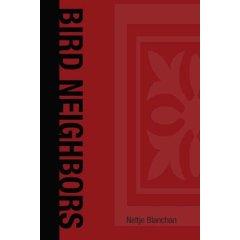| 2020ok Directory of FREE Online Books and FREE eBooks |
Free eBooks > Outdoors & Nature > Field Guides > Birds > Bird Neighbors
Bird Neighborsby Neltje Blanchan  Download Book (Respecting the intellectual property of others is utmost important to us, we make every effort to make sure we only link to legitimate sites, such as those sites owned by authors and publishers. If you have any questions about these links, please contact us.) link 1 link 2 link 3 About Book Book Description An Introductory Acquaintance With One Hundred and Fifty Birds Commonly Found in the Gardens, Meadows, and Woods About Our Home Download Description A charming and comprehensive guide to birds of North America. Excerpted from Bird Neighbors [E-BOOK: MICROSOFT READER] by Neltje Blanchan. Copyright © 2001. Reprinted by permission. All rights reserved BLUE AND BLUISH BIRDS THE BLUEBIRD (Sialia sialis) Thrush family Called also: BLUE ROBIN; [EASTERN BLUEBIRD, AOU 1998] Length-7 inches. About an inch longer than the English sparrow. Male-Upper parts, wings, and tail bright blue, with rusty wash in autumn. Throat, breast, and sides cinnamon-red. Underneath white. Female-Has duller blue feathers, washed with gray, and a paler breast than male. Range-North America, from Nova Scotia. and Manitoba to Gulf of Mexico. Southward in winter from Middle States to Bermuda and West Indies. Migrations-March. November. Summer resident. A few sometimes remain throughout the winter. With the first soft, plaintive warble of the bluebirds early in March, the sugar camps, waiting for their signal, take on a bustling activity; the farmer looks to his plough; orders are hurried off to the seedsmen; a fever to be out of doors seizes one: spring is here. Snowstorms may yet whiten fields and gardens, high winds may howl about the trees and chimneys, but the little blue heralds persistently proclaim from the orchard and garden that the spring procession has begun to move.Tru-al-ly, tru-al-ly, they sweetly assert to our incredulous ears. The bluebird is not always a migrant, except in the more northern portions of the country. Some representatives there are always with us, but the great majority winter south and drop out of the spring procession on its way northward, the males a little ahead of their mates, which show housewifely instincts immediately after their arrival. A pair of these rather undemonstrative matter-of-fact lovers go about looking for some deserted woodpecker's hole in the orchard, peering into cavities in the fence-rails, or into the bird-houses that, once set up in the old-fashioned gardens for their special benefit, are now appropriated too often by the ubiquitous sparrow. Wrens they can readily dispossess of an attractive tenement, and do. With a temper as heavenly as the color of their feathers, the bluebird's sense of justice is not always so adorable. But sparrows unnerve them into cowardice. The comparatively infrequent nesting of the bluebirds about our homes at the present time is one of the most deplorable results of unrestricted sparrow immigration. Formerly they were the commonest of bird neighbors. Nest-building is not a favorite occupation with the bluebirds, that are conspicuously domestic none the less. Two, and even three, broods in a season fully occupy their time. As in most cases, the mother-bird does more than her share of the work. The male looks with wondering admiration at the housewifely activity, applauds her with song, feeds her as she sits brooding over the nestful of pale greenish-blue eggs, but his adoration of her virtues does not lead him into emulation. "Shifting his light load of song, From post to post along the cheerless fence," Lowell observed that he carried his duties quite as lightly. When the young birds first emerge from the shell they are almost black; they come into their splendid heritage of color by degrees, lest their young heads might be turned. It is only as they spread their tiny wings for their first flight from the nest that we can see a few blue feathers. With the first cool days of autumn the bluebirds collect in flocks, often associating with orioles and kingbirds in sheltered, sunny places where insects are still plentiful. Their steady, undulating flight now becomes erratic as they take food on the wing-a habit that they may have learned by association with the kingbirds, for they have also adopted the habit of perching upon some conspicuous lookout and then suddenly launching out into the air for a passing fly and returning to their perch. Long after their associates have gone southward, they linger like the last leaves on the tree. It is indeed "good-bye to summer" when the bluebirds withdraw their touch of brightness from the dreary November landscape. The bluebirds from Canada and the northern portions of New England and New York migrate into Virginia and the Carolinas, the birds from the Middle States move down into the Gulf States to pass the winter. It was there that countless numbers were cut off by the severe winter of 1894-95, which was so severe in that section. Related Free eBooks
| Related Tags |












SEND A COMMENT
PLEASE READ: All comments must be approved before appearing in the thread; time and space constraints prevent all comments from appearing. We will only approve comments that are directly related to the article, use appropriate language and are not attacking the comments of others.